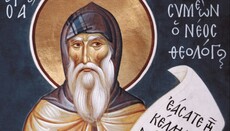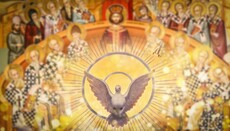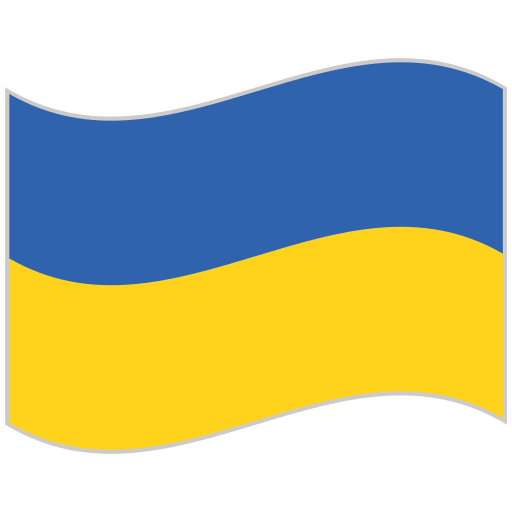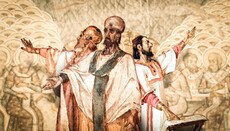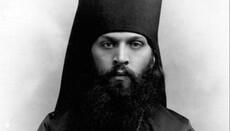VIII Ecumenical Council: Rejection of filioque and papism heresies
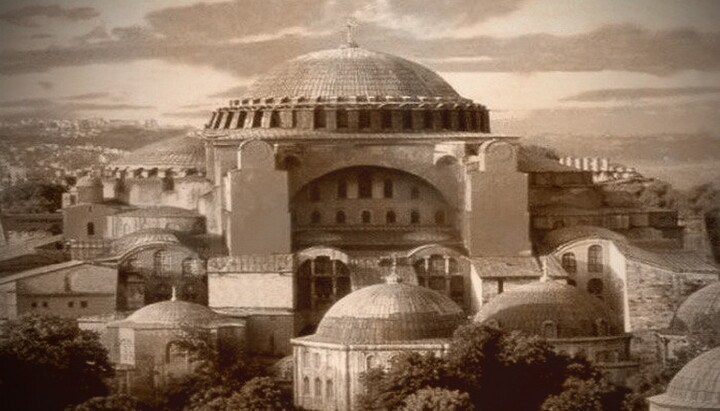
Almost every word in the title of this article can be debated. Was it truly Ecumenical? And were the mentioned heresies actually condemned? The topic is complex, but we will try to examine it.
This article is a continuation of a series of articles on the Ecumenical Councils, of which there were seven, as is commonly believed. However, there is an opinion that at least two more councils could claim ecumenical status: the Fourth Council of Constantinople (879–880) and the Fifth Council of Constantinople (1351). This article is supposed to discuss the first of these. However, this council has already been covered in detail in the article "About the ‘Eighth Ecumenical’ Council and Present Times".
That article was prompted by a statement by Metropolitan Seraphim of Piraeus (of the Church of Greece), who asserted that this was indeed the Eighth Ecumenical Council and that we owe to it the purity of Orthodox teaching.
Therefore, for those interested in the history of the Ecumenical Councils, we recommend first to read the aforementioned article before returning to this one. Here, we will attempt to present arguments both for and against recognising this council as ecumenical, as well as to explain why the Catholic Church initially recognised the Council of 869–870 as ecumenical, then denounced it as a false council and rejected it only to reverse its stance again several centuries later.
Additionally, we will examine whether the decisions of the 879–880 Council provide grounds for considering the doctrines of Filioque and Papism to be heretical.
Ecumenical or not?
It should be noted from the outset that there are no clearly defined formal criteria for determining whether a council is ecumenical or not. It is generally accepted that an Ecumenical Council must:
• represent all Local Churches;
• address significant doctrinal issues;
• have its decisions accepted by the fullness of the Church;
• be recognised as Ecumenical by the next Ecumenical Council.
Even these informal but seemingly widely accepted criteria raise questions.
Firstly, what level of representation is required from each Local Church? Who should represent the Church, and how many representatives must there be? What rank should they hold? What authority should they have from their Church? None of this is formally defined anywhere.
It was often the case that an Ecumenical Council consisted of hundreds of bishops from the Church of Constantinople, a few papal legates – sometimes only presbyters or deacons – alongside a roughly equal number of representatives from the Eastern Patriarchates. In some instances, the actions of these representatives were later deemed an abuse of authority after the Council. There were also cases where such reconsideration happened decades or even centuries later, when political necessity dictated a change in the Church’s stance on a council.
Secondly, some Ecumenical Councils did not define new doctrinal matters but merely affirmed previously established teachings or convened to establish canonical regulations.
Thirdly, how much time must pass before the Church in its fullness accepts or rejects a council's decisions? There have been instances where such decisions were many decades after a council had taken place. In the meantime, a false council might have been recognised as ecumenical, with anathemas against holy men, while a true Ecumenical Council was considered as "robber".
Fourthly, the criterion of recognising a council as ecumenical by a subsequent Ecumenical Council is a logical contradiction. If this were the case, then the First Ecumenical Council could not have been considered ecumenical until recognised by the Second, but the Second could not gain ecumenical status until recognised by the Third, and so on.
Incidentally, this is largely why the Eighth Ecumenical Council is not recognised as such by most Local Churches because there was no Ninth Council to affirm its ecumenical status. In fact, this is the main argument against its recognition. A second argument is that this council did not define or resolve doctrinal issues. While it can be argued that the Council's decision rejected the Latin doctrine of Filioque, the teaching itself was not deeply examined or debated at the 879–880 Council. However, as mentioned earlier, the argument that an Ecumenical Council must necessarily address doctrinal matters remains open to debate.
We will not delve into the opinion (sometimes elevated to the status of prophecy) that there can only be seven Ecumenical Councils and that the eighth will be the one that recognises the Antichrist. This argument is clearly invalid. To forbid the Church from convening councils would be to deny it a fundamental principle of ecclesiology – conciliar governance. Moreover, to anticipate the discussion, we believe that there have already been more than seven Ecumenical Councils.
There are, in fact, far more arguments in favour of recognising the 879–880 Council as the Eighth Ecumenical Council:
I. Its composition justified its status.
Papal legates, fully authorised in their actions by Pope John VIII, participated in the Council. Representatives of the Eastern Patriarchates also attended and were officially mandated by their respective Churches. An interesting detail: during the 879–880 Council, while discussing the illegitimacy of the 869–870 Council and its decisions, it was revealed that the representatives of the Eastern Patriarchates at that earlier council had not had proper authorisation. In response, the Papal legates demanded verification of the credentials of the present representatives. This verification was carried out and confirmed their legitimacy. Therefore, the 879–880 Council genuinely represented the entire Church and can rightfully be recognised as Ecumenical.
II. While the 879–880 Council did not formally analyse the doctrine of Filioque, the issue was already in the air. The Council’s prohibition against adding or altering the Nicene-Constantinopolitan Creed was specifically directed against Filioque, and this was well understood by all involved. For this reason, the Council’s decision can be considered dogmatic in substance, although it was not so in form. More on this below.
III. The reception of the 879–880 Council’s decisions by the entire Church did take place. In Orthodoxy, this recognition remains unchanged to this day. In Catholicism, the stance later shifted but there were reasons for this, as described below.
Therefore, the 879–880 Council has every right to be regarded as the Eighth Ecumenical Council, as it is recognised by the Greek Churches.
A Council or a pseudo-council?
It is worth noting that in Orthodoxy, framing the question in this way is inappropriate. The debate may centre on whether the 879–880 Council was truly Ecumenical or not, but there is no doubt that it was not a pseudo-council. In Catholicism, however, the perspective is different.
Ten years before the 879–880 Council, another council was held in Constantinople (869–870), which immediately declared itself “ecumenical”. To anticipate the discussion, it is important to note that Rome initially recognised this council as “ecumenical”, later denounced it as a “robber council”, and then once again reinstated its ecumenical status. To understand why these shifts occurred, we must briefly outline the events leading up to the 869–870 Council.
In 842, the Council that definitively affirmed icon veneration was held in Constantinople; and in 843, the Triumph of Orthodoxy over all heresies was celebrated for the first time.
At that time, the Patriarch of Constantinople was Saint Methodius, who had been appointed to replace the deposed iconoclast Patriarch John the Grammarian. In 847, Patriarch Methodius passed away, and in his place, the strict ascetic and devout monk Ignatius was chosen. He was the son of Emperor Michael I Rangabe, who had been deposed in 813. At the age of 14, Ignatius was forcibly castrated, took monastic vows, and withdrew entirely from worldly affairs, living in a monastery.
In 857, a coup took place, leading to the removal of Empress Theodora from power. Her 17-year-old son, Michael III nicknamed "the Drunkard" was declared sole emperor. However, he took little interest in governing, indulging instead in debauchery and orgies. Real power was concentrated in the hands of his favourite, Bardas. Ignatius and Bardas had a series of conflicts, culminating in attempts to force the patriarch to resign. When this failed, Ignatius was forcibly deposed and replaced by the secular official and senator Photius, a future saint and one of the most outstanding patriarchs in Church history.
To Photius’ credit, it must be noted that he initially refused the offer to take the throne. When he finally agreed, he gave a written pledge to remain in communion with Ignatius, to honour him as a father, to seek his counsel and not to persecute his supporters. However, Ignatius' followers were dissatisfied with this arrangement. They organised a council and anathematised Photius. In response, Photius and his supporters did exactly the same. As often happened in such disputes, both sides appealed to the Pope – an action the Pope interpreted as recognition of his supreme authority over the entire Church.
This is, of course, a very simplified account; in fact, there were many ambiguous events in this whole story. Pope Nicholas I refused to recognise Photius as patriarch or even as a bishop and convened a council that anathematised him in 863. Additionally, this entire controversy was influenced by the rivalry between Rome and Constantinople over Bulgaria, where both sides were actively engaged in missionary work. This largely determined the Pope's attitude to the Constantinople disputes.
In 865, Bulgaria was baptised by the Greeks, but after falling out with Constantinople, it turned to Rome. Roman bishops began expelling Greek clergy and imposing Christianity with already emerging Latin distortions, such as the Filioque heresy and the supremacy of papal authority.
In response to the Pope’s anathema and the Latins’ efforts to establish a Latin-style Christianity in Bulgaria, Photius convened a council in 867, attended by representatives of all the Eastern Patriarchates. When inviting participants, Photius sent them a substantial letter denouncing Latin errors and detailing Rome’s actions in Bulgaria. These errors were presumably discussed and condemned at the council, and the Pope himself was condemned, deposed, and possibly even anathematised.
It is impossible to state this definitively, as the acts of this council were soon destroyed.
A few months—or even weeks—after this council, another coup took place in Constantinople. Emperor Michael III was assassinated, and Basil I the Macedonian took the throne. This new emperor rejected everything his predecessor had done, including the Council of 867, deposed Photius, and reinstated Ignatius as patriarch.
In 869, a council was held in Rome, where Photius and all those who had signed the acts of the 867 Constantinople council were excommunicated, and the acts themselves were ceremoniously burned.
In 869–870, a Council was held in Constantinople at the initiative of Emperor Basil I and Pope Adrian II. This council condemned and deposed Patriarch Photius and affirmed the supremacy of the Pope of Rome over the entire Church, declaring him beyond the jurisdiction of even an Ecumenical Council.
Interestingly, this same Council also confirmed the “dogma” that a human being consists of only body and soul rather than body, soul and spirit. The 869–870 Council was extremely small in number; apart from the Papal legates and representatives of the Eastern Patriarchates, there were only 12 bishops present at the first session. The number of attendees later increased slightly, but it remained relatively insignificant.
However, before long, both Emperor Basil I and the reinstated Patriarch Ignatius realised that they had made excessive concessions to Rome. The conflict in Bulgaria persisted, as the country had once again shifted its allegiance and returned to the jurisdiction of the Church of Constantinople. After Ignatius’ death in 877 and Photius' subsequent reinstatement as patriarch (having reconciled with Ignatius shortly before his passing), the need for a new council to rehabilitate Photius became urgent.
In 879, Basil I convened a council, to which the Pope sent legates and the Eastern Patriarchs sent their representatives.
A total of 383 bishops attended, making it a rather significant gathering. This Council of 879–880 condemned the Council of 869–870, reinstated Photius as patriarch, recognised the Second Council of Nicaea (787) as the Seventh Ecumenical Council, and adopted several other important resolutions, as detailed below.
Pope John VIII accepted all the decisions of the 879–880 Council, including the rejection of the 869–870 Council. Thus, it can be asserted that the Roman Church agreed that the Pope was not an absolute ruler of the Church and was subject to Ecumenical Councils. In this way, the entire Church agreed that the 869–870 Council was a pseudo-council and recognised the 879–880 Council as Ecumenical. The Greek Churches continue to regard this council as Ecumenical to this day, while others classify it as a Local Council.
However, Rome’s attitude towards this Council changed after the schism between Orthodoxy and Latin Christianity in 1054. Roman theologians heavily criticised the 879–880 Council; and today, the Catholic Church considers it a pseudo-council. Instead, the 869–870 council is listed as the "Eighth Ecumenical Council" in Catholic records.
The reason for this shift in perspective is clear: the 869–870 Council affirmed the supremacy of the Pope of Rome, whereas the 879–880 Council actually denied it. Therefore, it is reasonable to state that the Eighth Ecumenical Council (879–880) rejected papal supremacy in the Church, even though it did not explicitly condemn Papism as a heresy.
At that time, however, in the ninth century, Papism had not yet developed into the fully formulated form that exists today. Consequently, it was possible to reject the Pope’s claims to supremacy without directly rejecting the doctrine itself.
Was the filioque heresy condemned?
The primary argument against the notion that the Filioque was condemned is the fact that the 879–880 Council did not explicitly examine or discuss the doctrine, nor did it issue a ruling on the matter. This stands in stark contrast to the way previous Ecumenical Councils had dealt with heresies. Typically, such teachings were thoroughly debated, with references to the writings of earlier Church Fathers. In some cases, original manuscripts from archives and libraries were brought forth and read aloud to support the discussions. Heated debates often ensued. Then an official document (the horos) was adopted which set forth the correct doctrine and anathematised heresy and those who adhered to it. None of this occurred at the 879–880 Сouncil. The doctrine of the Filioque was not even mentioned. So, what did happen?
On 3 March 880, during the sixth, penultimate, session of the Сouncil (the final session was a formal closing ceremony), an official Horos was adopted. This session was attended by Emperor Basil I and only 22 bishops representing the Сouncil. After reaffirming the Nicene-Constantinopolitan Creed, the following statement was made:
“If anyone, however, dares to rewrite and call Rule of Faith some other exposition besides that of the sacred Symbol which has been spread abroad from above by our blessed and holy Fathers even as far as ourselves, and to snatch the authority of the confession of those divine men and impose on it his own invented phrases (ἰδίαις εὑρεσιολογίαις [idíais heuresiologíais]) and put this forth as a common lesson to the faithful or to those who return from some kind of heresy, and display the audacity to falsify completely (κατακιβδηλεῦσαι ἀποϑρασυνϑείη [ katakibdēleúsai apothrasyntheíē]) the antiquity of this sacred and venerable Horos (Rule) with illegitimate words, or additions, or subtractions, such a person should, according to the vote of the holy and Ecumenical Synods, which has been already acclaimed before us, be subjected to complete defrocking if he happens to be one of the clergymen, or be sent away with an anathema if he happens to be one of the lay people.”
Formally speaking, we cannot claim that the 879–880 Council explicitly condemned the Filioque as a heresy; at most, it prohibited its inclusion in the Creed.
However, in essence, all participants of the 879–880 Council fully understood that the prohibition on adding anything to the Niceno-Constantinopolitan Creed was specifically aimed at the Filioque. At the time, no other doctrine posed a threat to the purity of the faith.
Patriarch Photius expressed himself sharply against the Filioque in his Encyclical Letter of 867: "But the impious Westerners (the supporters of the Filioque – Ed.) did not stop their lawlessness even here. They attempted by their false opinions and distorted words to ruin the holy and sacred Nicene Symbol of Faith – which by both synodal and universal decisions possesses invincible power – by adding to it that the Holy Spirit proceeds not only from the Father, as the Symbol declares, but from the Son also.”
This raises a logical question: why, then, did Patriarch Photius not initiate a full consideration of the Filioque at the 879–880 Council and have it formally condemned as heresy? This can be explained by the fact that Photius, as an experienced court official, understood the political landscape before the Council and sensed that the chances of success were not particularly high. Therefore, he chose to sidestep the Filioque issue diplomatically and instead secure its rejection in the form of a prohibition against any additions to the Creed. Moreover, the formal justification for this was the fact that Latin missionaries were preaching Christianity in Bulgaria with the Filioque inserted into the Creed.
Another argument for the condemnation of the Filioque is the fact that the Church accepted the decisions of the 879–880 Council and agreed with the rejection of the Filioque. Even the Roman Church did not insist on this doctrine for more than a century afterwards. This is because the Filioque originally emerged as a local teaching within what is known as Germanic theology. Officially, Rome did not recognise this teaching, though it was somewhat lenient towards it.
For example, Pope Leo III was a convinced supporter of the Filioque, but in 809, in response to a complaint from the Patriarch of Jerusalem, he ordered the Creed to be inscribed on silver plaques in St Peter’s Basilica without the Filioque – both in Greek and Latin. The final official recognition of the Filioque by the Roman Church is dated to 1014, when the Creed, with the Filioque included, was solemnly chanted at the coronation of the German Emperor Henry II.
Thus, we have every reason to assert that, in essence, the Filioque heresy was indeed rejected at the 879–880 Council.
Projection on today
It often happens that a tactical victory leads to strategic problems. Yes, it is possible that St Photius chose not to initiate a direct consideration of the Filioque at the 879–880 Council and instead secured its rejection through a prohibition on adding to the Creed, as this was a simpler approach. However, today, this allows the Vatican to argue that the Filioque was never formally condemned by the Church as a heresy.
As a result, in discussions about the potential future reunification of the Vatican and Constantinople, it is possible to reach an agreement where both sides acknowledge the Niceno-Constantinopolitan Creed while the Vatican retains the right to uphold the Filioque doctrine within its own tradition.
